Ampex
Ampex 200A #33 Golden State Recording Studios - David Buell
David provided the following information which includes his time at Golden State Recording Studios in San Francisco when Leo De Gar Kulka had the Ampex 200A #33 which is in the MOMSR collection.
In 1978, I temporarily moved from Dallas to San Francisco to attend The College for Recording Arts, which was held at Golden State Recorders. At the time, it was one of the only schools in the country teaching recording, disc mastering and other aspects of the music business. As you know, Leo was the owner of Golden State and Sonic Arts disc mastering.
Leo was VERY proud of his Ampex 200 and enjoyed telling stories about it and it’s use at Capitol. He was also very protective of it and wouldn’t allow anyone to use it. Somehow, I managed rise up to be one of the top in my class. I only mention that because, during my final recording project, I talked Leo into letting me record a wind chime sound effect onto the 200 that I then flew into my mix. I had plenty of tracks left on the Stephens 16-track, but for some reason (the challenge maybe?) I wanted to fly it in live during the middle 8 of the song, while we bounced the mix to the 2-track. The 200 performed flawlessly and the high end on the chimes sounded so much better coming off a full-track mono piece of tape, rather than being recorded on the Stephens with a track width of approximately 1 channel of a 2-track 1/4”. On top of that, the Stephens didn’t have any noise reduction (no NR at all, anywhere in the studio).
The Stephens also operated flawlessly. I remember that the meter panel on the front of the machine opened like a door and you had to peer around the panel as you aligned the machine to see the meter readings. Certainly not very convenient. :) I was also intrigued by the closed-loop 3M transport. The machine had no remote. We had a dedicated tape op running it and the 2-track.
I learned so much from Leo and all the instructors there. Leo was bigger than life. Tall with a booming voice and a Czechoslovakian accent, I can still see and hear him coming down the hall, arms out wide and saying, “David! So GOOOOD to see you!!”
One practical thing he taught was how to do a full band recording with no overdubs. Placing the players on the room so they could communicate and play off one another and how to have mic leakage be usable and musical.
One philosophical thing he left me with when I graduated (and I think about now as I’m about to retire) is that a lot of people will help me on my engineering journey and it’s my duty, in turn, to help others on their way up the ladder. I’ve tried to do that in my career, but the business now is nothing like it used to be. Not many positions available where you sweep floors, get coffee and work your way up to engineer.
Thanks for letting me ramble on and please don’t hesitate to reach out if there’s ANYTHING that I can do for you and your very worthwhile endeavor…
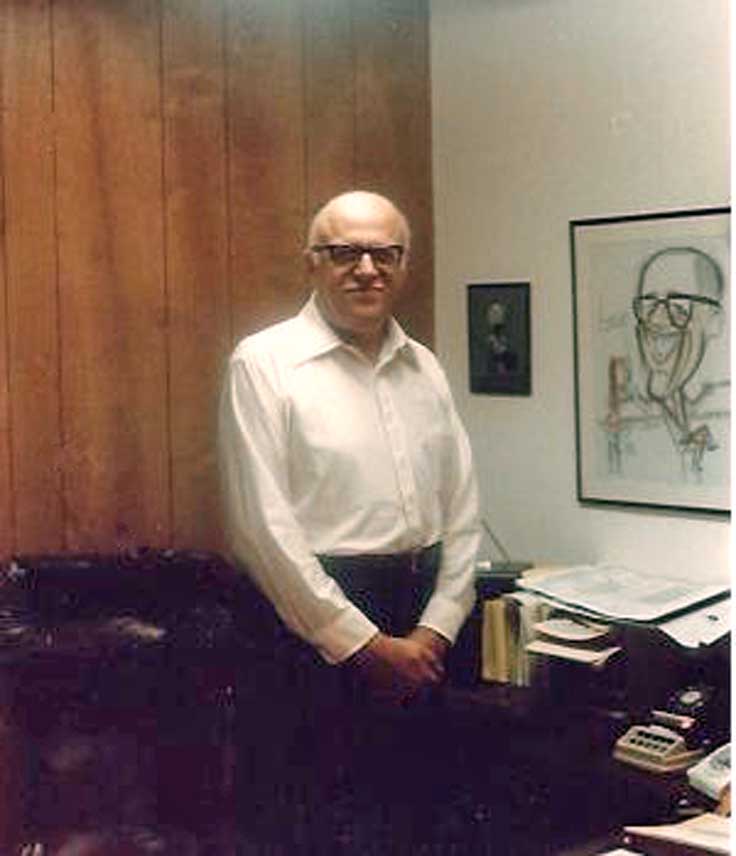
Leo in his office at Golden State Recorders; ca. 1978
|
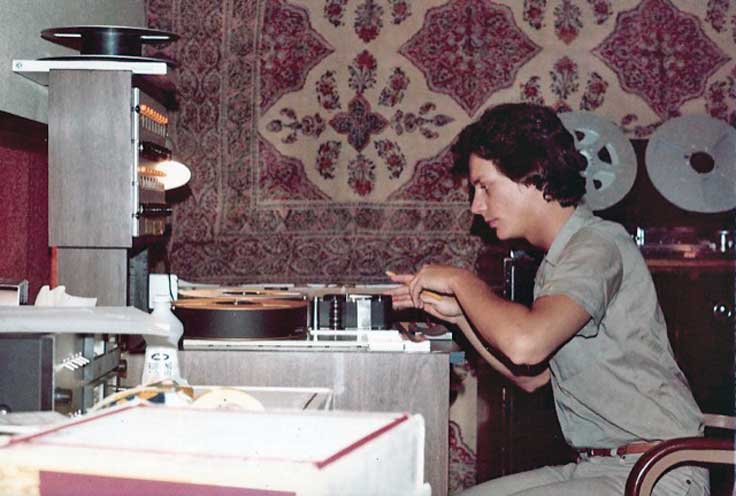
Michael Mason at the Stephens 16 track; The Ampex 200 is in the background; An Ampex AG-440 2 track is underneath the tape boxes in the foreground. We mixed down to a 2 track Ampex 350. Leo was tube man. He didn’t really like the sound of the 440. :)
|
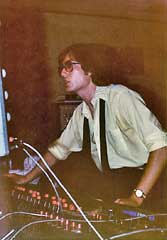 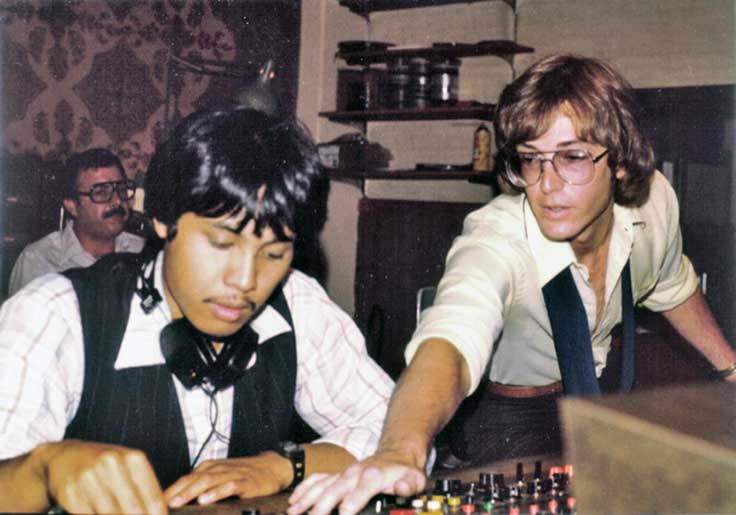
Me behind the Quad Eight console, recording my final project. In the picture on the right, a fellow student mans the monitor section of the console. No inline channels on this baby!
|
Hi David!
It’s interesting that you mentioned the Ampex 200A as a mono machine. At some point the original electronics were removed. When Asleep At the Wheel demoed on the recorder, it had four Inovonics amps and was being used as a four track. I bought another 200 that was supposedly known as the “White” 200s, just to get a set of electronics. Unfortunately the restoration was incomplete, so it will be a work in progress. Cheers! Martin
Hi Martin!
Well there you go, getting me thinking again! :)
I said it was mono, based on nothing but a lingering memory. But now that you ask, currently, I’m not exactly sure of that. I dug out my 1/4” Master of the song, which SHOULD have the wind chimes on it (I also “smuggled out” my 2” 16-track of the session, by replacing it with a new roll of tape-but that’s another story). Once I get a machine hooked up so I can listen, that MIGHT provide us a clue. A LOT of variables, but if the chimes are in stereo, then that would then prove that it was a 2-track, since I'm 100% sure I used the 200 for the chimes, and I’m 100% sure it was on 1/4” tape. If the chimes are mono, then I either recorded it on one channel of the 2-track, or it was a mono machine. I’ll let you know what, if anything, that produces…
I only have a fleeting memory of what was behind the front cabinet doors, As I said, Leo was VERY protective of that machine and took the position of, “there’s nothing to see in there that any of you need to be concerned about”. We didn’t do any kind of alignment on it before the session. It just was what it was. I’m feeling like he told us that to align it, it need some test equipment (VTVM, etc.) hooked up to it and the maintenance department needed to do it. Not the normal front panel adjustments and look at the level meter alignment. He may have made that up to justify not touching anything inside. I'm struggling to form a picture in my mind of what was in there, the one time he did open it up. I do remember him talking about “bathtub (or maybe just “tub"?) electronics, but I didn’t then, nor now, really understand what that meant by that. Does that term mean anything to you?
I was just looking at the pictures of the “White” 200 electronics on your website. I see the two Inovonics electronics, in addition to the chassis electronics, that have the Dymo labels “PB EQ”, “NOISE” (love that one-is that bias?), PB LEVEL etc.. Did those two Inovonics take the place of the electronics in the bottom of the cabinet? Those (I’ll call them the Dymo electronics) are what I remember inside the studio machine. I don’t have a memory of Inovonics amps or anything like a 300 electronics inside, but that memory is over 40 years old and was from probably the first week of school. I feel like those were maybe what he was referring to as “tub electronics”...
View some of the recorders David owned over the years
Ampro
Ampro stories This is information about a later (1970's) company with the Ampro name
Arlyn Studios - Lisa and Freddy Fletcher

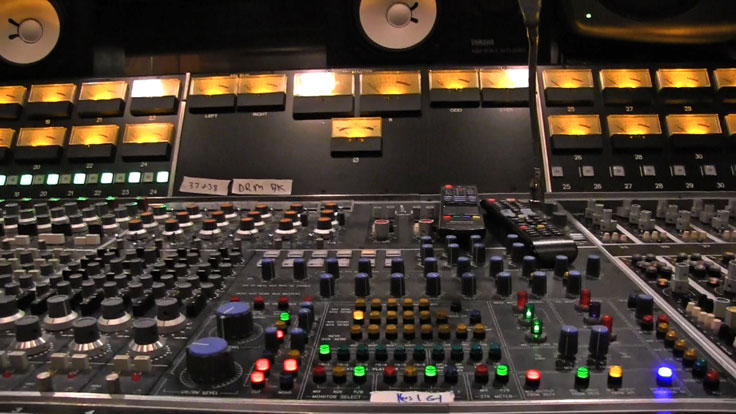
Lisa and Freddy Fletcher with Austin's Arlyn Studios were interviewed by MOMSR's Directors Chris and Martin Theophilus. The interviews include Lisa and Freddy's histories and the history of the building Arlyn occupies.
Go to stories about Arlyn Studios, Lisa and Freddy Fletcher
Ray Benson - Asleep At The Wheel
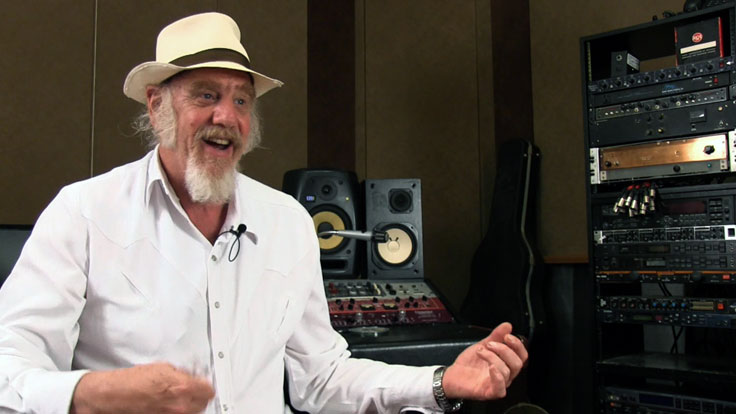
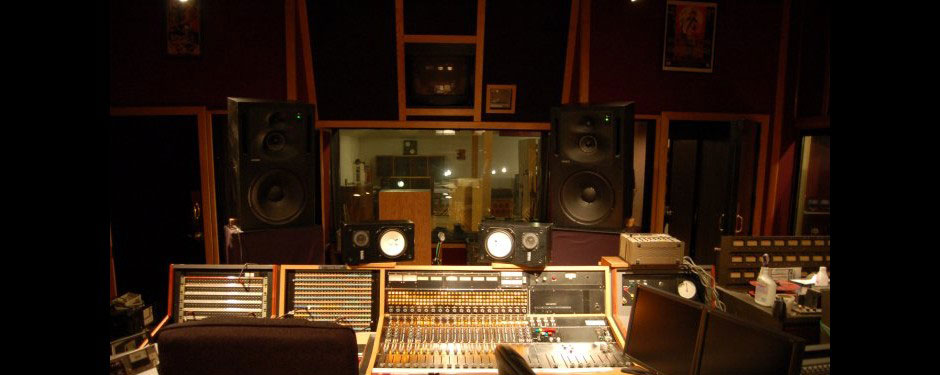
Chris and Martin Theophilus (Phantom Productions, Inc.) interviewed Ray Benson at Bismeaux Studio B for the Museum of Magnetic Sound Recording. View the video at this link. We appreciate Ray granting permission for the use of the photo and video content in the interview. Bismeaux Studio A (right)
Austin City Limits Audio Director - David Hough
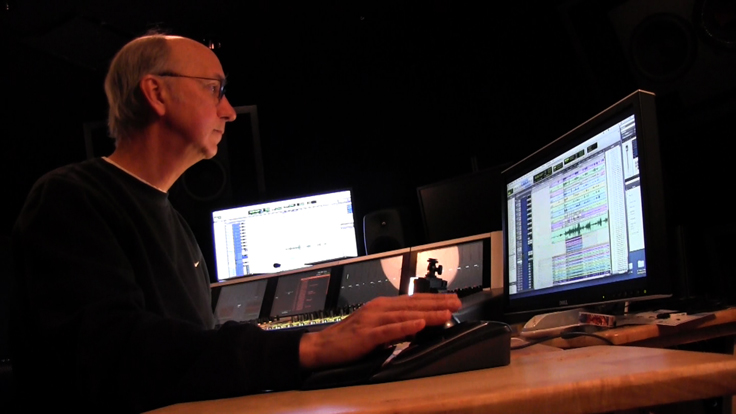 On January 15, 2013, MOMSR's Directors were granted an interview with David Hough, the Audio Director for Austin City Limits since its inception 38 years ago. We made an appointment with him to discuss MOMSR plans and to see his new facility. At the last moment we grabbed a camera and conducted a casual interview which was very interesting. The video's a bit rough, however the content is excellent. View David Hough video (QuickTime) We also recommend this video produced by AVID about the new ACL facility.
On January 15, 2013, MOMSR's Directors were granted an interview with David Hough, the Audio Director for Austin City Limits since its inception 38 years ago. We made an appointment with him to discuss MOMSR plans and to see his new facility. At the last moment we grabbed a camera and conducted a casual interview which was very interesting. The video's a bit rough, however the content is excellent. View David Hough video (QuickTime) We also recommend this video produced by AVID about the new ACL facility.
BBC - EMI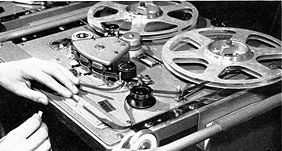
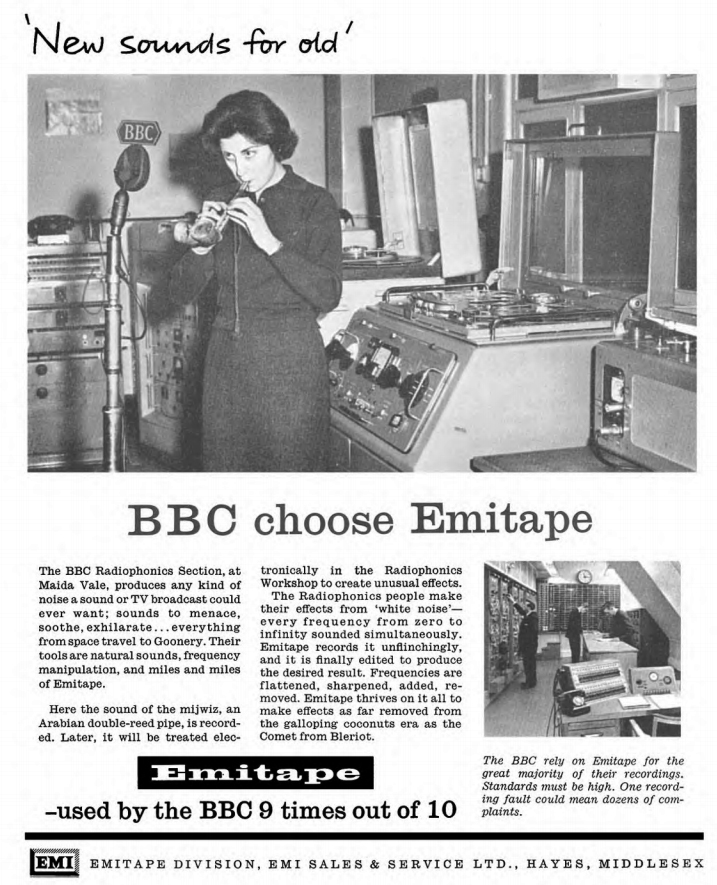
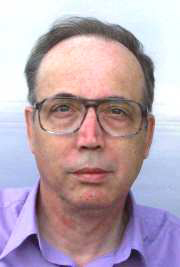 The Museum of Magnetic Sound Recording greatly appreciates Roger Wilmut, who worked for the BBC from the 1960's to 2000, for providing us with the following information on the BBC and EMI. This content was provided by Roger from his web site.
The Museum of Magnetic Sound Recording greatly appreciates Roger Wilmut, who worked for the BBC from the 1960's to 2000, for providing us with the following information on the BBC and EMI. This content was provided by Roger from his web site.
Go to stories about the BBC and EMI
Berlant - Concertone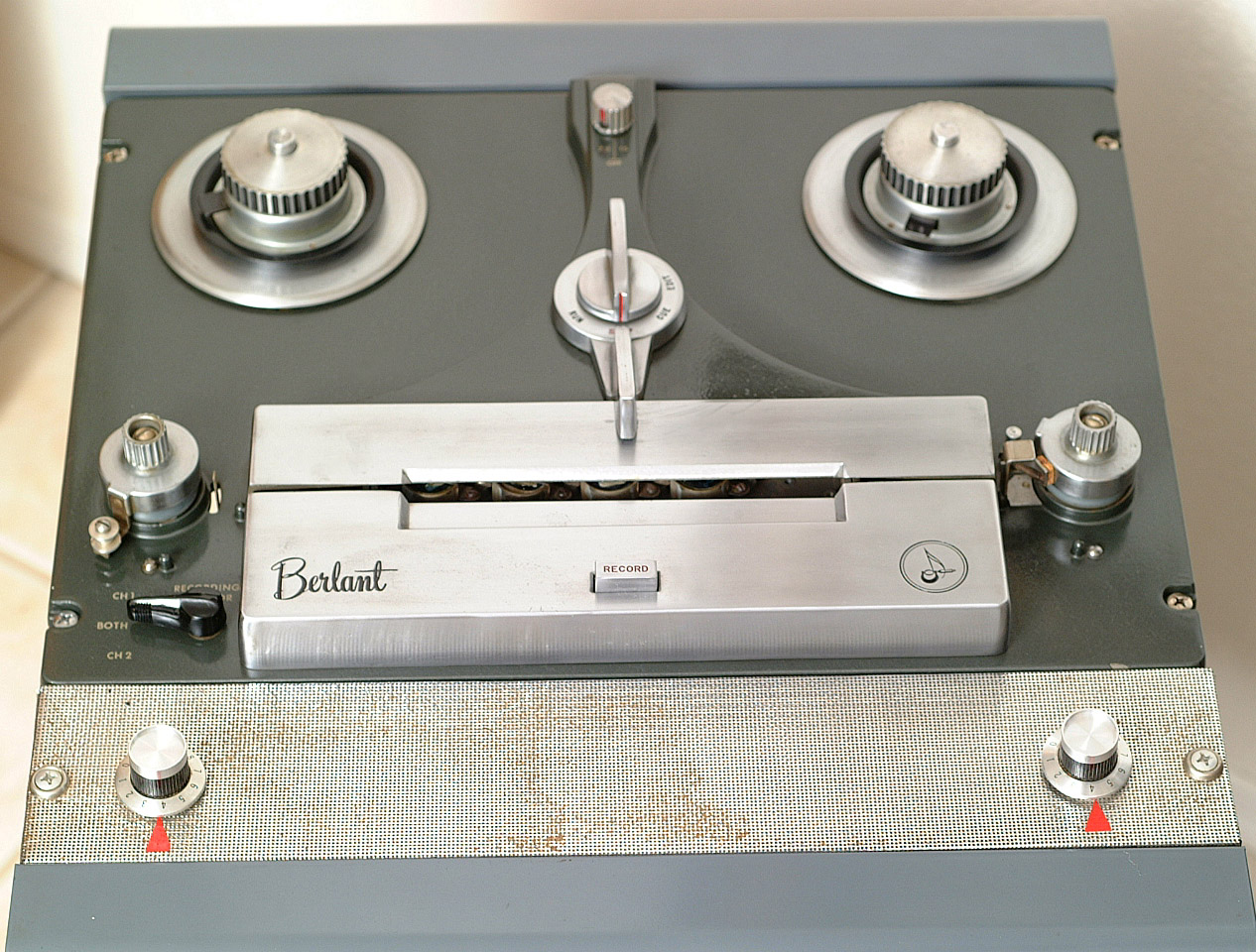
April, 2012
Phantom Productions received this information from Jerry Norton who worked with American Astro-Systems as they transitioned from Concertone tape recorders to supplying high tech gear to the military.
Go to stories Berlant Concertone stories
Joel Block - The Block House Studios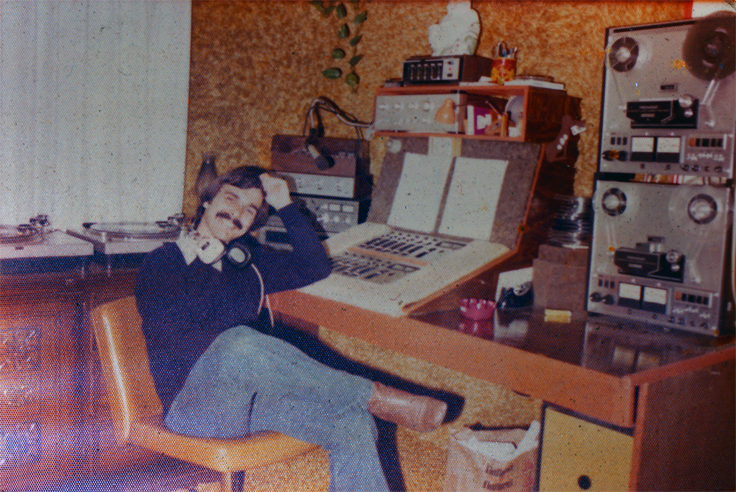
Joel's experience adds another dimension to the Museum's capturing of magnetic audio recording. His experience comes from radio and in the area of commercials, audio books, industrials, jingles and spoken word projects. We believe you will find the information about Joel's dad, Martin Block, to be fascinating as well. We hope you enjoy this MOMSR interview with Joel Block.
Brush History - A.P. Dank 1931 to 1974 - Brush Development Company photos of A.P. Dank contributed by his Grandson Michael Dank
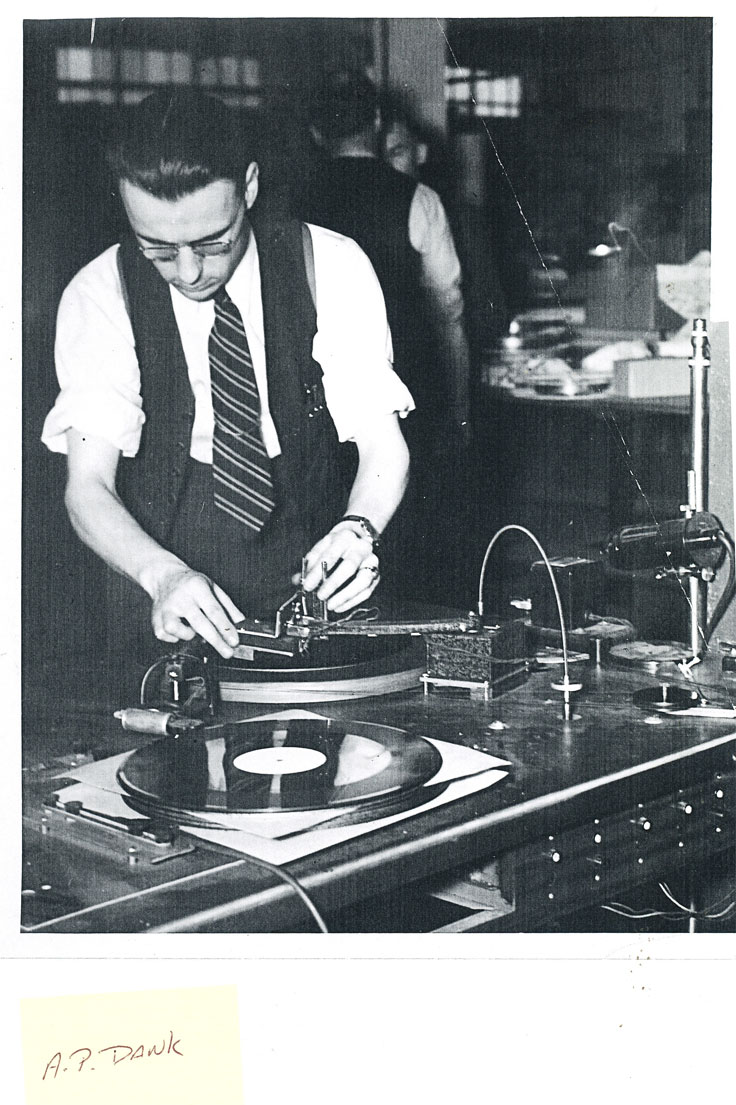 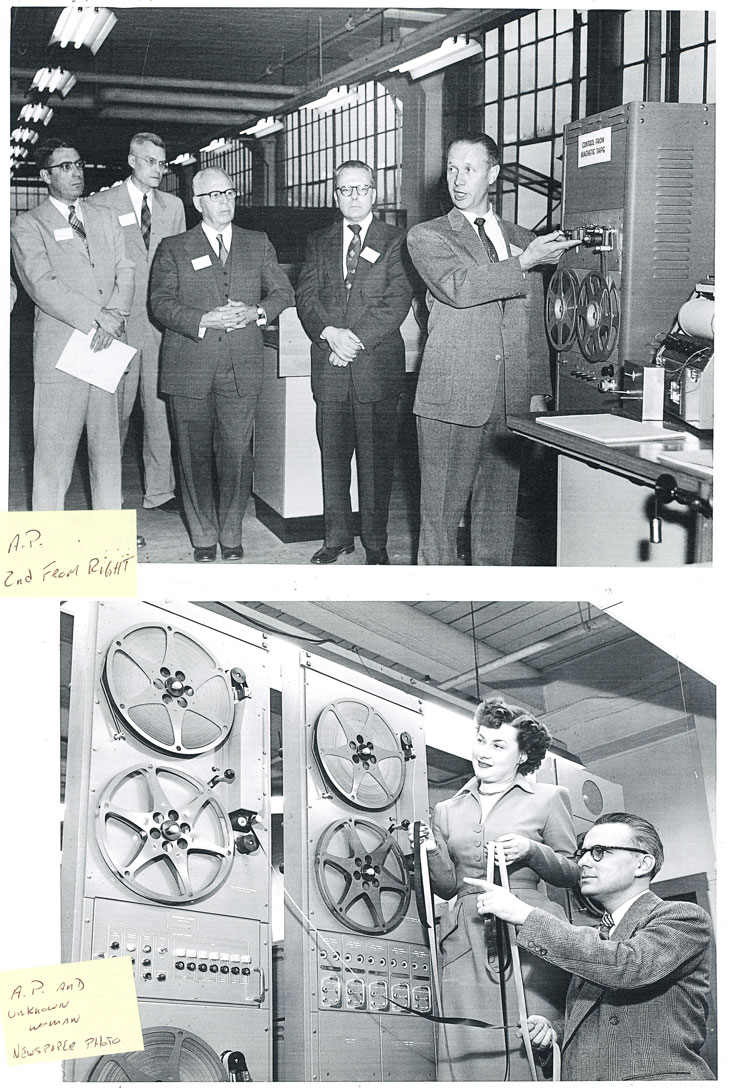 |
Hi folks,
I have my grandfather's Brush Sound Mirror BK-443 reel to reel recorder and am interested in selling it. My grandfather Alfred P. Dank worked for Brush-Clevite-Gould for his entire career 1931-1974 and actually had some recording patents through them. This is a complete unit with microphone and original reels. It works great. I have recorded with it with my band in the past.
Also have some other Brush microphones.
I will be sending the information I have on my grandfather Alfred. P Dank's work with Brush-Celvite-Gould in the next few days. As I mentioned earlier he worked for them from 1931-1974. Feel free to use what is applicable and edit it for content. I have included some photocopies of pictures as well. Family lore says his tenure with Brush started before his 1931 hire date. His older brother, my uncle Merv was friends with the Brush family and the two Dank boys as teenagers would cut the grass and do landscaping for the company during the summer.
Unfortunately the photographs and drawing mentioned in the text are unavailable.
Here is the link to the patent AP Dank had while working for Brush-Clevite-Gould
Please shoot me an email when this information posts. I know my two brothers and nephews will enjoy reading it.
Regards, Mike Dank |
View more photos and comments about Brush by A.P. Dank • Go to Brush Development Company Stories • More about the Brush Development Company • Brush recorders in our collection
Brush Soundmirror BK-401
"My father owned one of these machines; he obtained it in early 1948, and when he bought it, it was the first tape recorder in Kansas outside of a radio station.
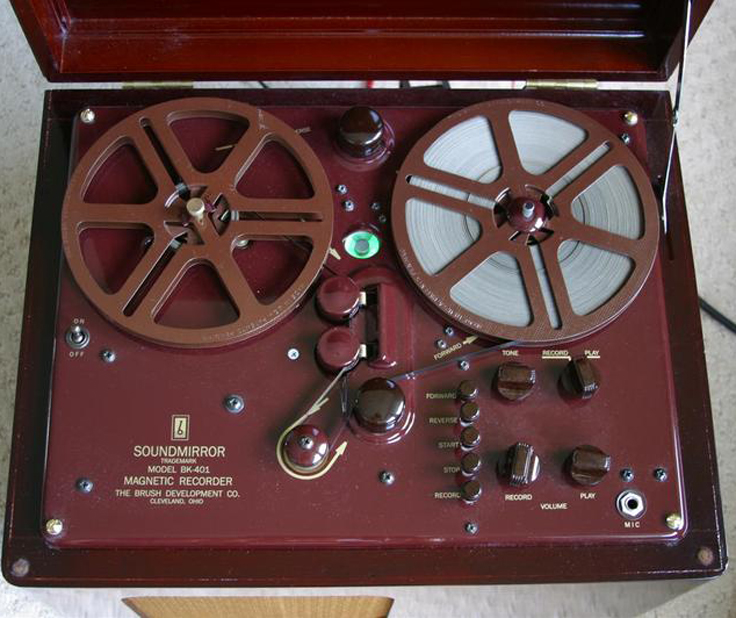
The specifications were fairly primitive - the frequency response was 100-5,000 cycles per second as they called them in those days, and the signal to noise ration was a whopping 35 db! The unit was equipped as standard equipment with a ball-shaped crystal microphone. You could definitely tell the difference between a live performance and a recording on this machine, but it was novel enough to allow my dad to do professional recording for several years.
I don't know of any photos of my dad with the machine, sadly. The only thing I have is about 20 reels of the old paper tape that he recorded. Before he died I was able to play the tapes onto much more modern reel tapes - Dad had an RCA home recorder at the end of his life. Those paper tapes put a quite a bit of wear on an old Tandberg reel recorder that I played them on, that I ended up disposing of because the Tandberg heads ended up worn from the usage of the paper tapes."
Robert Moehle
Remy Ann David - CrowMobile

Recording history stories by Remy David
Floyd Domino

While Floyd Domino is widely recognized for his years with Asleep at the Wheel and the revival of Western Swing, Floyd began his career with a broad grounding in jazz, boogie woogie, swing and blues piano. Floyd's sparkling keyboards and versatility make him the choice of swing, jazz and blues musicians well beyond his Austin, Texas home. Go to Floyd Domino Stories to Play video
Editall - Joel Tall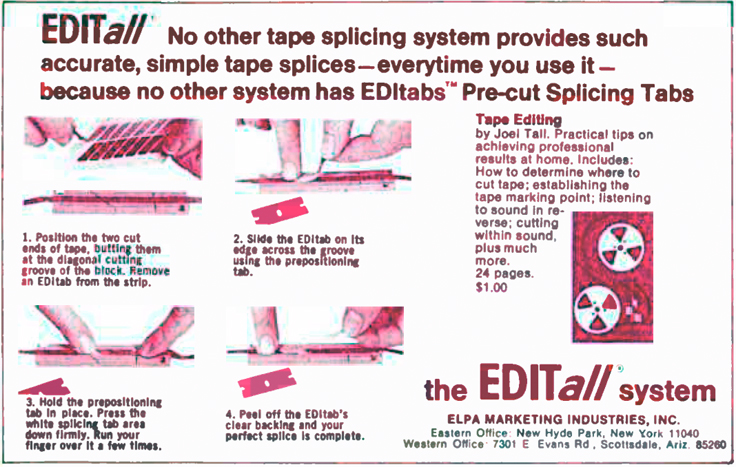
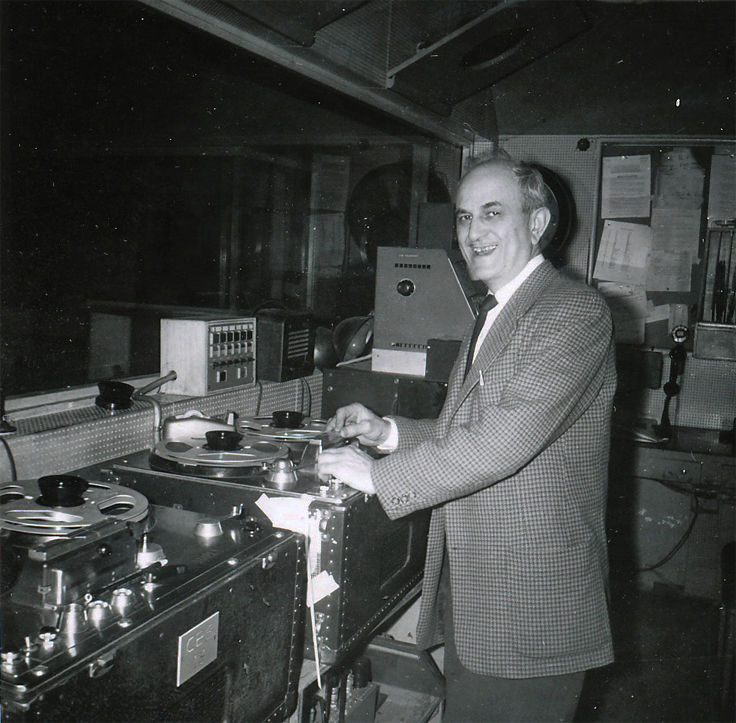
Joel Tall was born on April 17, 1905 and passed away in December 1986. He was married to Leona B. Tall and was survived by one daughter Benita J. Kaplan. Leona helped Joel Tall found The Tall Company in the 1950's.
Benita Kaplan has generously donated some of Joel Tall's personal papers and photo to our Museum of Magnetic Sound Recording.
In 1950 Joel Tall filed U.S. Patent #US 2599667 A for his Splicing Block stating "This invention relates to splicing blocks, such as are used in splicing film and sound recording tape, and specifically it refers to a block which is particularly suitable for editing sound recording tape." View the full patent More information
Electro Voice
 Al Kahn - founder of Electro Voice (07/09/1906 - 06/15/2005)
Al Kahn - founder of Electro Voice (07/09/1906 - 06/15/2005)
Al Kahn, the founder of Electro Voice and the inventor of several important microphone models told a great story on how his company got its name. Mr. Kahn was an industry pioneer and an early supporter of AMC and a NAMM member since the year after the company was formed in 1932! When Mr. Kahn was interviewed for the NAMM Oral History program he recalled his early love of electronics and the story of when football coach Knute Rockne named his company after Al had created a PA system to assist Rochne in coaching. In 1942 he released the first differential microphone and hired Al Wiggins who invented the Cardyne Cardioid Dynamic mic in 1946. The company has enjoyed great success as a leader in innovation for decades including the first Acoustalloy Non-Metallic Diaphragm and the company's greatest commercial success, the 664-model microphone, known as the Buchanan Hammer. NAMM
ELM Laboratories - Eugene Leon Mleczko 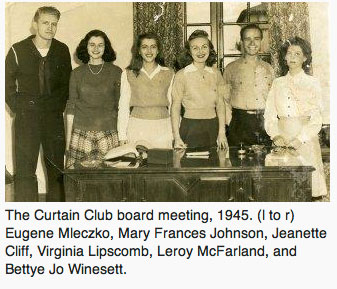
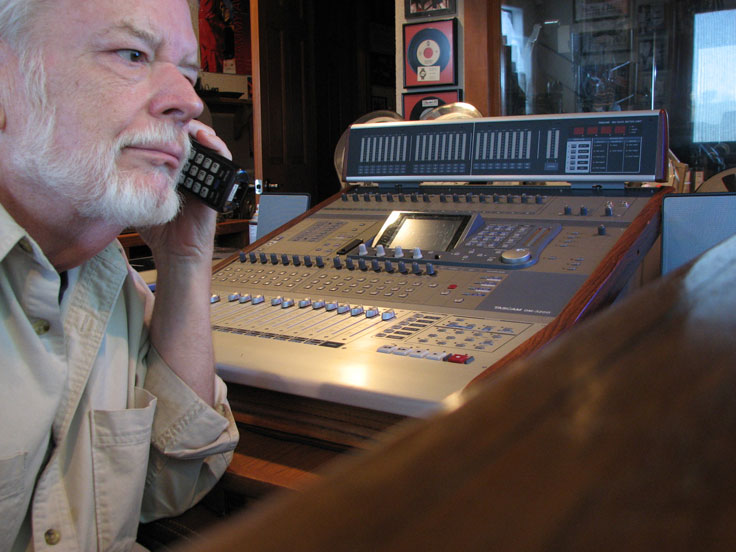
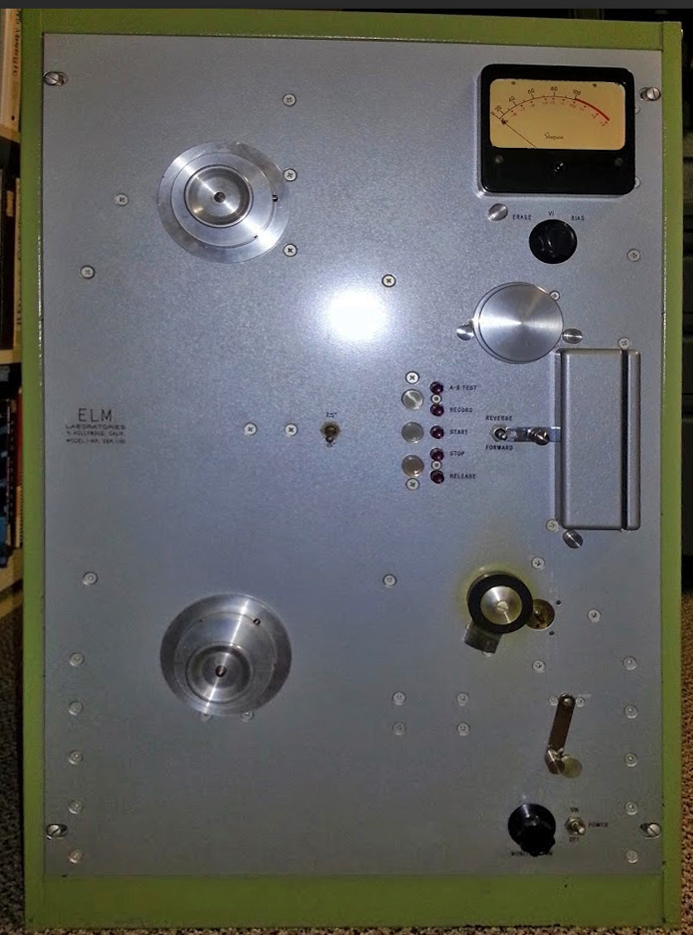 Martin interviewed Eugene by phone in 2014
Martin interviewed Eugene by phone in 2014
Eugene Leon Mleczko ELM Laboratories - "This unit is a one of a kind, it is more than a "home brew" but the company never went in to full production. The founder of ELM Laboratories is a personal friend of my, I believe he is 94 years old. This was a pride and joy of thousands of hours of work and research. He was in the broadcast industry but was not happy with any units available at the time, so he set-out to build a unit that would out perform Ampex Corp. which he claims his has better specs. He has a some run of all custom made parts as spares and/or first run of units. The founder would love to tell you about it, he has an incredible memory, much better than mine." - David Wulf, Best Sound Co. Saint Louis, MO Eugene will donate this early professional recorder ELM-1 to MOMSR. Go to Eugene Leon Mleczko's MOMSR interview.
Ferrograph - Wright & Weaire Ltd. (London, England) - George Boston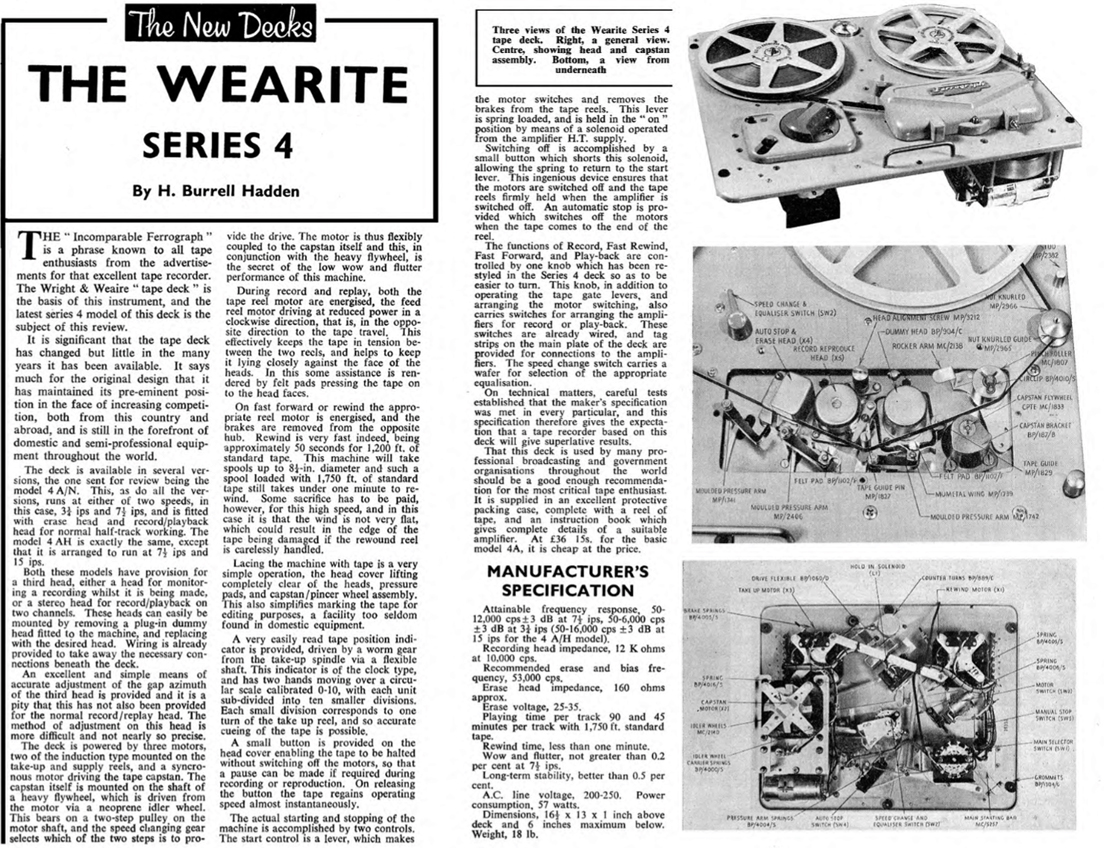
The history of the Ferrograph and Wearite is interwoven. The company was originally called Wright and Weaire and the first machines they sold were Wearite tape decks thus explaining why my father had to fit Quad amplifiers (another British company of the 1950s, 60s and 70s that made what many people considered to be the Rolls-Royce of amplifiers. The Ferrograph complete machine came a year or so after the launch of the Wearite tape deck in 1947. The decks were the same, just the name changed.
Ferrograph/Wearite information
My father, also George Boston, worked for a company called Bishop Sound that provided sound effects etc for the London theatres. Initially these were on direct cut disc, but in the 1950s my father fitted Quad amplifiers to a pair of Wearite decks. These were used for interviews with theatrical personalities including Noel Coward and Ivor Novello. These recordings are in the National Sound Archive in the British Library. In 1985 I was arranging an exhibition of the history of sound recording at the BBC Open University Centre and arranged to borrow some machines from the British library. One of the machines was a Wearite deck as modified by my father.
When I left the BBC in 1992, I was able to take my Ferrograph office tape machine with me. Two days ago, it was passed to Leicester University Oral History unit.
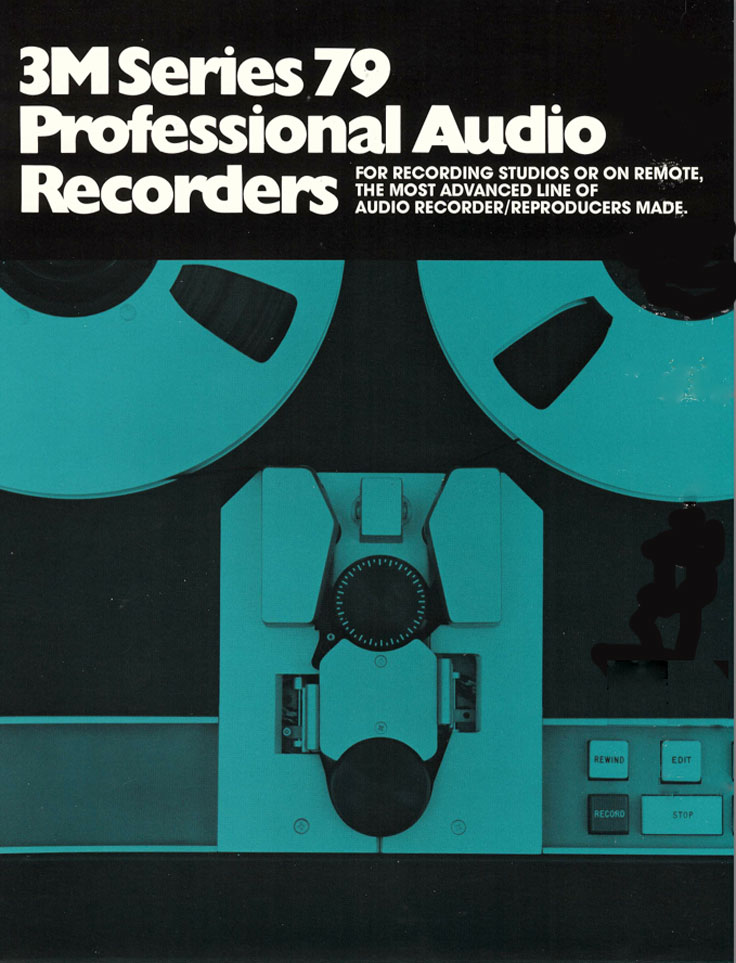
IBM Mincom - Martin Dombey - During my employment with Mincom from early 1981 to 1984…and based out of the Camarillo, CA factory, I witnessed some great sessions, and pristine mixes that were derived from 3M digital recorders by some of the most talented engineers in LA…Dennis Sands, Don Hahn, Roger Nichols, Lee Herschberg, & others. I believe their work stands tall to this day
Michael Leader - Ampex, Concertone, Leevers Rich, ReVox, Scully, Teac and more
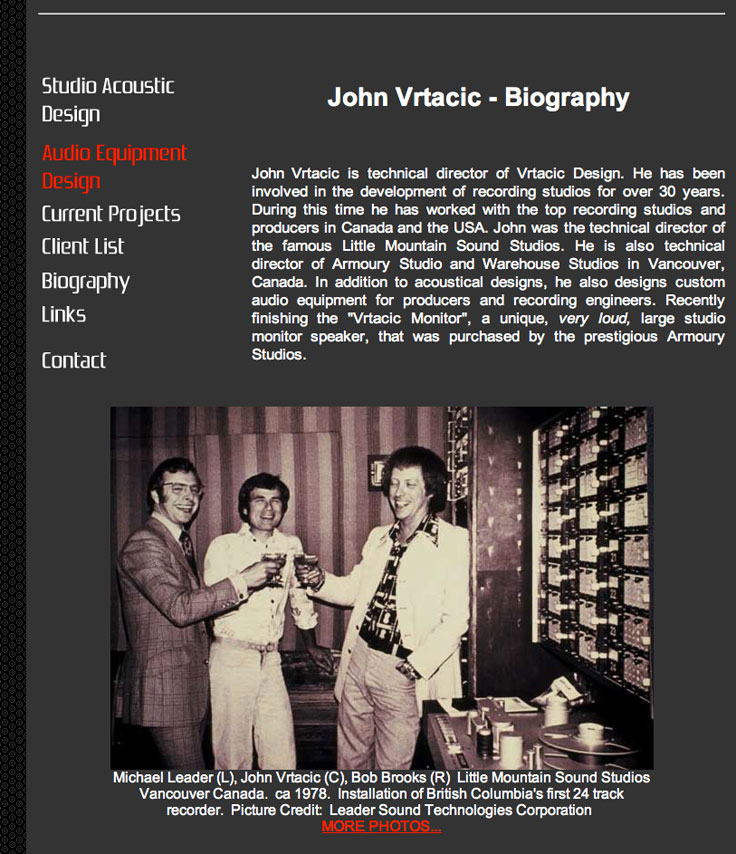
The Museum of Magnetic Sound Recording greatly appreciates Michael Leaders providing his history
Magnecord - John Boyers
Information on Magnecord from Dave Boyers, son of John Boyers, one of the original founders of Magnecord
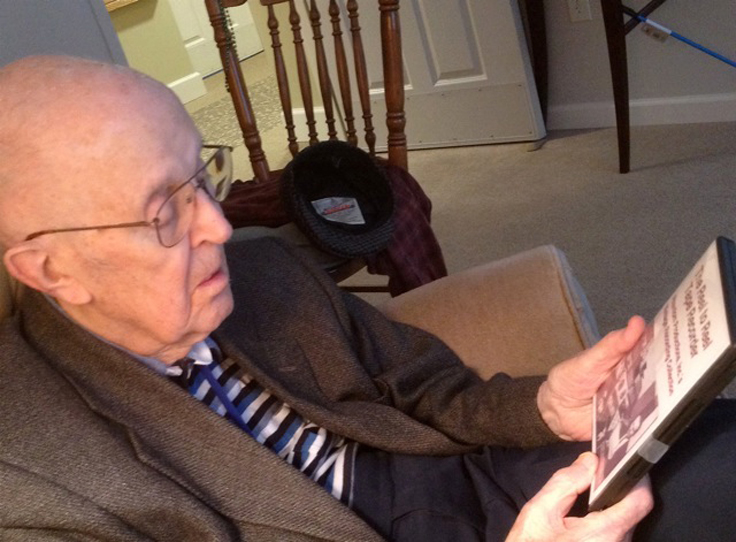
Left - John Boyers 1916 to 09/29/2012 (96).
On September 29, 2012 I was saddened to receive word from Dave Boyers, that his Dad had passed away. Here is the message he sent out.
"Gentlemen,
The last remaining founder of Magnecord, Inc. has now passed into history. Dad has wanted to go be with my mother for some time now, suffering the ravages of Alzheimer's for several years. His wishes were finally granted.
To the degree he could understand it, it has been no small measure of pride that so many people have come to know and appreciate the work he did half a century ago to further the art and science of audio recording.
Similarly, the work all of you do to keep the memory of those early pioneers alive is not only worthwhile, but also gives others like Dad a sense that the efforts they made are not forgotten.
Best wishes to you all,
db"
Go to Magnecord stories
Magnecord/HeathKit
Our Museum received a donation from Lawrence "Larry" Grover of the Magnecord /HeathKit 1020 reel to reel tape recorder. Larry also donated his tape recorder playbackand record pre-amp that was one of the earliest transistorized tape recorder amps.
I was a design engineer for Magnecord when it was a part of Midwestern Instruments in Tulsa Oklahoma. I designed the electronics for the solid state recorders. I have a model 1020 kit version and manuals by the Heathkit company where I was a design engineer. I would be pleased to donate these items to the museum if your interested.
Magnecord Memories
At my first job out of college, I worked for TI in the Germanium Applications branch. While there we got a request for a microphone amplifier from Midwestern Instruments. I was assigned to design the amplifier. As a demonstration project, I designed a fully transistorized record and playback set of electronics to be shown at the 1959 or 1960 Consumer Electronics Show in New Your city. I made a deal with my boss, I’d buy the deck (Viking) if I could have the complete unit afterwards. I believe this was the 1st public circuit of a fully transistorized record playback unit. Other transistorized circuits did not have a transistorized oscillator. About 1 year later, I found out that Midwestern Instruments was looking for a design engineer for the Magnecord division.
Paul Bunker was in charge of sales for Magnecord. He was aware of the emergence of transistorized audio equipment and had decided it was time to develop a solid state tape recorder. The first question was to use germanium or silicon transistors. Silicon was available but was significantly more expensive aimed at military and high end use (computers). Since there was no performance advantage of silicon over germanium (assuming temperature stable biasing design), we went with germanium. In hindsight, we could have gone with silicon as the price of silicon devices started dropping with increased usage. I later designed the electronics for the ANUNQ7 tape recorder designed for submarine use, using silicon.
While the mechanical engineer went to work on the tape transport mechanism, I started design on the electronics. At this time, I had only had 2 years of design experience, but I went 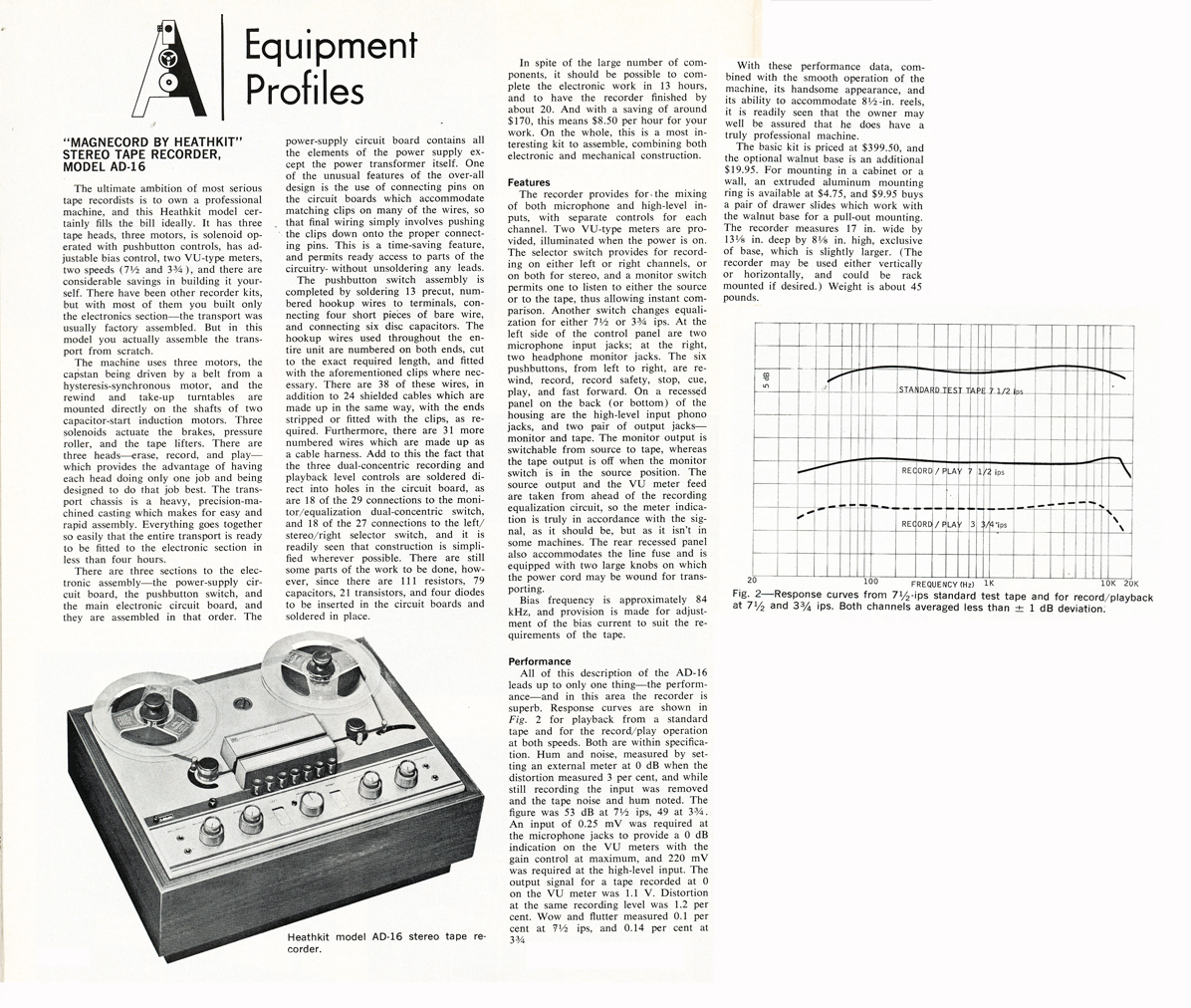 confidently ahead. At that time we were comparing transistor amplifier distortion to vacuum tube distortion specifications. Our amplifier designs were judged to be good if the distortion levels were at least as good as the vacuum tube amplifiers. Later it became more widely known that the nonlinearity of vacuum tubes tended to cause even harmonics, which are not very objectionable to our ears, since most instruments tend to produce notes with even harmonics. Transistors have a differently shape transfer curve and tend to produce odd harmonics which we find objectionable in music. Also vacuum tube amplifiers have a soft limiting when over driven versus a harder limiting for transistors, again producing less objectionable harmonics. If I had been aware of these facts at that time, I would have been more diligent in pursuing lower distortion designs. The final specifications of the design while comparable to vacuum tube designs of that day, didn’t reflect the more subtle character of the harmonics of the distortion. The fact that magnetic tape is nonlinear gave us additional justification to not to pursue lower distortion amplifiers.
confidently ahead. At that time we were comparing transistor amplifier distortion to vacuum tube distortion specifications. Our amplifier designs were judged to be good if the distortion levels were at least as good as the vacuum tube amplifiers. Later it became more widely known that the nonlinearity of vacuum tubes tended to cause even harmonics, which are not very objectionable to our ears, since most instruments tend to produce notes with even harmonics. Transistors have a differently shape transfer curve and tend to produce odd harmonics which we find objectionable in music. Also vacuum tube amplifiers have a soft limiting when over driven versus a harder limiting for transistors, again producing less objectionable harmonics. If I had been aware of these facts at that time, I would have been more diligent in pursuing lower distortion designs. The final specifications of the design while comparable to vacuum tube designs of that day, didn’t reflect the more subtle character of the harmonics of the distortion. The fact that magnetic tape is nonlinear gave us additional justification to not to pursue lower distortion amplifiers.
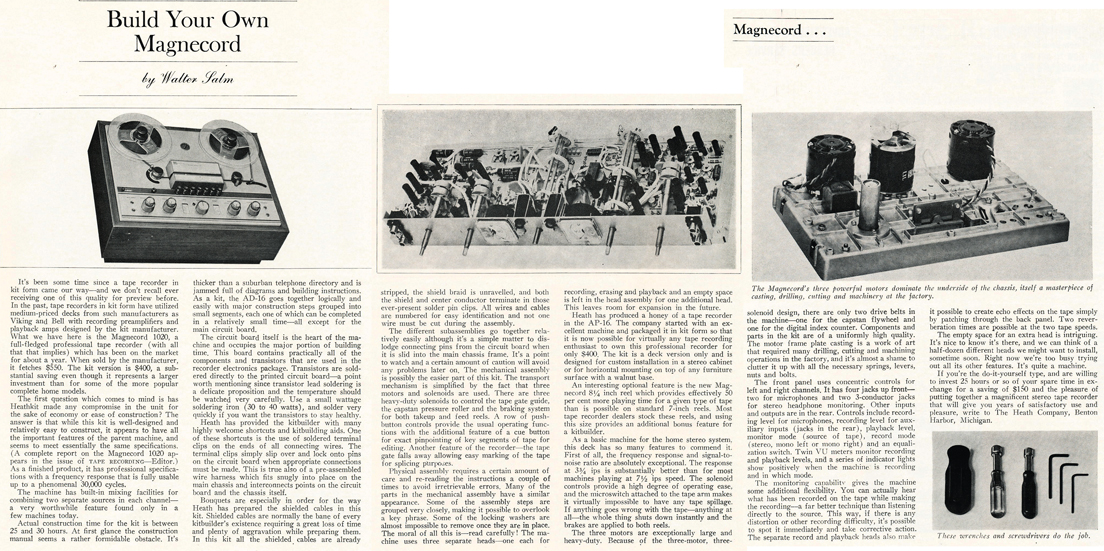 When the breadboards of the circuits were completed and tested, we made circuit board layouts. There weren’t any software programs to aid is this task at that time, so it was all done by hand. I made paper cutouts of the outlines of the components at 4 times scale. On a large piece of Mylar I used black layout tape and pads to lay the circuit out. An xacto knife came in handy to trim the curves and fillets. Of course this was all one sided to keep the cost low.
When the breadboards of the circuits were completed and tested, we made circuit board layouts. There weren’t any software programs to aid is this task at that time, so it was all done by hand. I made paper cutouts of the outlines of the components at 4 times scale. On a large piece of Mylar I used black layout tape and pads to lay the circuit out. An xacto knife came in handy to trim the curves and fillets. Of course this was all one sided to keep the cost low.
As I became more aware of the limitations of analog magnetic tape recording, I did some limited experiments on my own. With some success I was able to pre-distort the recording signal to null out some of the tape distortion. I also experimented with placing a magnetic material on the back side of the tape at the recording head in an effort to reduce the fringing flux. This resulted in a slight improvement in the recording of higher frequency signals. About this time we bid on and were awarded a contract to build the ANUNQ7 tape recorder for the navy, so I had no time to pursue either of these further.
The first Magnecord models I designed were the 1020 series, followed by the 2000 series. Later I was employed by the Heath Company. There we made a kit version of the 1020 series. The Heathkit version was the AD-16.
Lawrence Grover 4/26/2017
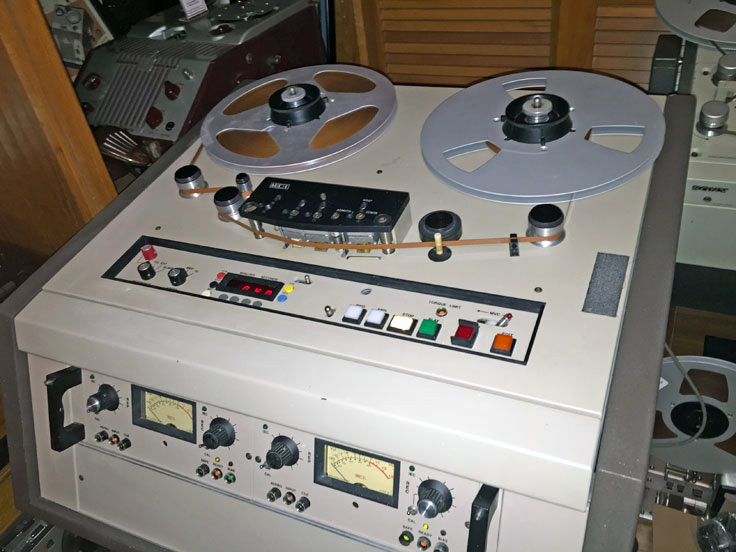
MCI
Go to MCI stories
NAGRA
We are sad to learn of the passing of Stefan Kudelski, founder of Nagra professional portable reel tape recorders. The following is the corporate release on January 28,2013.
Cheseaux, 28th January, 2013 – The Kudelski Group is deeply saddened to announce that Mr. Stefan Kudelski, 84 years old, passed away on 26th January 2013. Founder of the Kudelski Group in 1951, Stefan Kudelski invented the first portable professional recorder, the renowned “Nagra”, which is still today one of the most recognized brands in the sound recording domain.
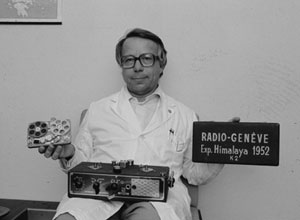 Stefan Kudelski led the company since its foundation and until 1991, when his son André succeeded as Chairman and Chief Executive Officer. Stefan Kudelski was a member of the Board of Directors of Kudelski SA until 2006, and since then served as its Honorary Chairman.
Stefan Kudelski led the company since its foundation and until 1991, when his son André succeeded as Chairman and Chief Executive Officer. Stefan Kudelski was a member of the Board of Directors of Kudelski SA until 2006, and since then served as its Honorary Chairman.
An exceptional inventor and a pioneer, Stefan Kudelski revolutionized the world of sound recording by developing a range of world-renowned recorders used in the radio, motion picture, television and security industries.
In 1983, he entered the hall of fame of motion picture and television by receiving the John Grierson International Gold Medal, joining luminaries of the Society of Motion Picture and Television Engineers that include Louis Lumière, Thomas Edison, Lee de Forest, George Eastman, Walt Disney, Samuel Warner, Léon Gaumont, Ray Dolby and Vladimir Zworkyin.
In the course of his career, he was awarded numerous distinctions among which Oscars from the Academy of Motion Picture Arts and Sciences in 1965, 1977, 1978 and 1990, two Emmy Awards from the Academy of Television Arts and Sciences in 1984 and 1986. He was also Doctor Honoris Causa from the Swiss Federal Institute of Technology (EPFL) since 1986.
Stefan Kudelski was one of those personalities who contributed to the international reputation of Switzerland. Anyone who knew him could only be impressed by his sharpness, his incredible culture, his curiosity and his permanent sense of humor. Stefan Kudelski was more than a brilliant inventor; he was a man of values, a fine mind that will live on with us for a long time,” declared Claude Smadja, Vice Chairman of the Board of Directors of Kudelski SA.
 “With the loss of Stefan Kudelski, our Group will miss its founder and the inventor of the Nagra recorder. Stefan Kudelski defined our Group. The values he stood for form the foundation of our company and its reputation today across the five continents. Among those values, the determination to demonstrate that technological challenges described as impossible are always successfully achieved by teams that know no boundaries,” said André Kudelski.
“With the loss of Stefan Kudelski, our Group will miss its founder and the inventor of the Nagra recorder. Stefan Kudelski defined our Group. The values he stood for form the foundation of our company and its reputation today across the five continents. Among those values, the determination to demonstrate that technological challenges described as impossible are always successfully achieved by teams that know no boundaries,” said André Kudelski.
Contact:
Phil Mundwiller, Corporate Communications, +41 21 732 01 81, phil.mundwiller@nagra.com
NPR
Recording History - General
Peter Balint - Edison, Farrograph, ReVox, Uher and Teacs
"...my interest in audio came from my grandfather (who owned an Edison phonograph and many cylinders which I did get to listen to) back in the 60s he thought valve radios were a good source of toys for me, in pieces and complete I had a room at his place full of them. He got me wiring his workshop lights when I was 6 which was about the time he started to leave me unsupervised with live radio chassis protected just by some common sense rules; don't touch the live or hot bits being the main one! (Times have changed eh... sigh!) All was well though and the experiments I did like swapping speakers, extending aerials and trying to match very ancient 78 turntables to radio amplifiers etc, actually cemented my interest in audio.
I used Ferrographs, Revoxs, Uhers and Teacs back when I was a sound engineer in the 70s and 80s for making sound effects and music recording for theatre. When I was head of sound for a major repertory theatre and we had a small studio that opened into a large rehearsal room so what we couldn't fit in the booth went out there, its acoustics were interesting. I moved on and in the 80s I was mainly doing live music engineering for a wide range of genres, rock, soul, reggae, folk, Tex-Mex etc and a lot of jazz and world music towards the end. I had a workshop in London building small high quality PAs and preparing musicians backline for the road quite often for use by established musicians who were fed up that small often meant low quality. I had worked for a large London sound, lighting and AV company and had prepared maintained and used many large systems; I wanted to bring the standard of the large set up to the small PA. I moved the workshop out into the country in 86 and built a couple of recording studios, one for a wealthy musician was a very comprehensive job.
Things change and somehow I had got involved in commercial networking in the late 80s and by 1990 telecoms had become the majority of my work. Now after 25yrs I find myself missing the audio and too ill to do my telecoms work and so in need of a project. Time to resurrect the workshop I think and a bit more.
I was fortunate to buy a few things many years ago, Tannoy Red and Gold Monitors, various amps and mics, stuff that was beginning to become redundant at the time. I have a Revox A77 2 track and I have recently bought a Teac A3340 4 track, (when I first got one in the 70s it was a revelation... multi-tracking had arrived in my life!) So I'm thinking of putting it all together with a few extra bits to make a vintage slightly mobile studio. It's back to basics on some levels, recording straight to two track with minimal but good quality mics. I'm looking for acoustic or perhaps jazz bands that are up for an experiment, if it's just one or a small band we can do it in my living room; I live in a tiny community of 8 cottages surrounded by fields and woods and as long as the sessions are in the day time and occasional I shouldn't get complaints, besides I'll probably invite the neighbours round as extra sound damping! It would be nice to see it progress into local village halls doing a small (cosy) live gig whilst recording a separate mix on to 2 track magnetic tape. Whether I can use old contacts to get an established band or solo act to perform in a village hall remains to be seen but I will need another (retired?) engineer... Although I do see this as a community project and the neighbours very brilliant musical son and other local musicians would also be occasionally welcome to go analogue and use the equipment.
I'm currently looking for a 15 ips master recorder, an A77 or B77 would be nice and probably sensible as there is a Revox service place 30 miles away and they are - in my experience - inherently reliable, but I keep getting sidetracked by the idea of a Ferrograph Series 6 stereo machine. There are high speed versions of these valve machines but they rarely come up; these old Ferrographs being one of the few machines that offered 3 speeds, the standard having 1.7/8 - 3.3/4 - 7.5 and the high speed version 3 3/4 - 7.5 - 15. It's not the sensible choice, they were dinosaurs in their own time, old fashioned tape controls and tape followers whereas Revox and others had already found ways of keeping the tape covering the head without such contraptions! But I really liked the sound of the old beasts, they might look like pieces of old military equipment (they probably were used by the forces in the 50s) but the electronics is top notch and Ferrographs were used a lot by the BBC at the time. Any I buy now would probably need a full restoration and valves - although I love them - aren't perhaps the best to transport around but it would not be the the only master machine as I would have the Revox and perhaps the Teac recording as well, (I could separate say a general stereo pair from the close mic mix.)
The house is now slowly filling up with boxes of equipment, I thought I had a lot of what was needed but then I realized everything from spitting transformers (have you seen the prices!) to mic stands to multicores to patchbays (I got a great deal on some ex-BBC Mosses and Mitchell jack panels) and a lot more were absent. As for village halls, the small matter of a second mixer and a PA; my Tannoy monitors will be fine at home but I'm not risking £5000 speakers as a PA, Tannoys cost a fortune to repair even in England! They are a piece of history though, all the famous British albums of the period 50s 60s 70s were first heard on a pair of Tannoys, Abbey Road, Decca all used them in their studios, however 35yrs ago I bought my first pair because I liked the sound and it was a speaker I had worked with many times.
Well thanks for all your help and look forward hopefully to downloading the rest of the videos, I'm sorry I didn't get it done on time. In case your wondering it is 4.30 in the morning here, a life time of night work has left its mark... although I am going to bed now!
Kind regards again, Peter"
Rupert NEVE
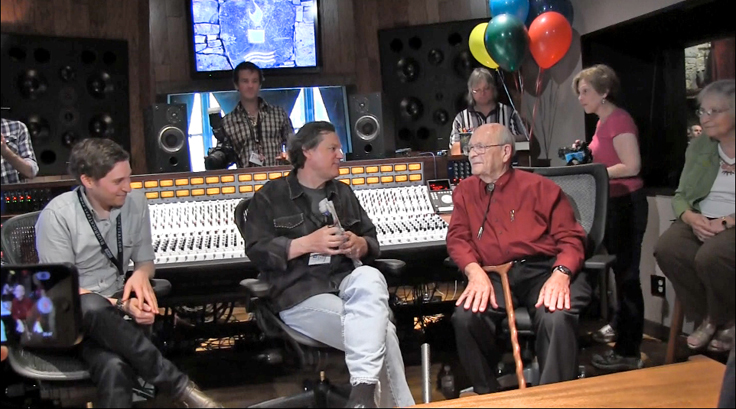
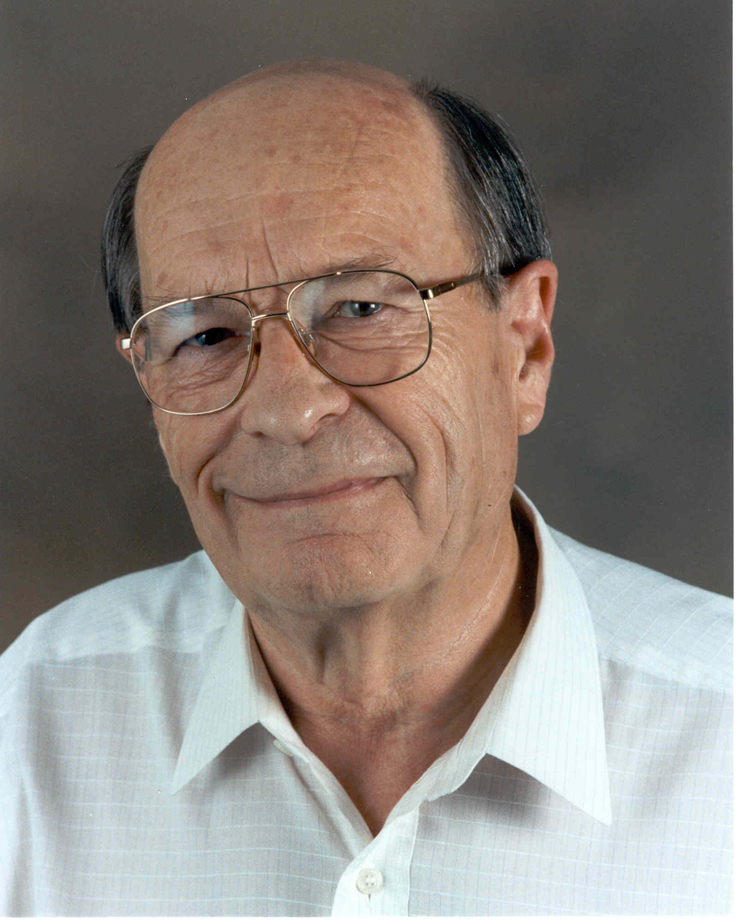

Please view MOMSR's video of Rupert Neve being interviewed by Billy Crockett of Blue Rock Studios during the dedication of the Blue Rock Neve 5088
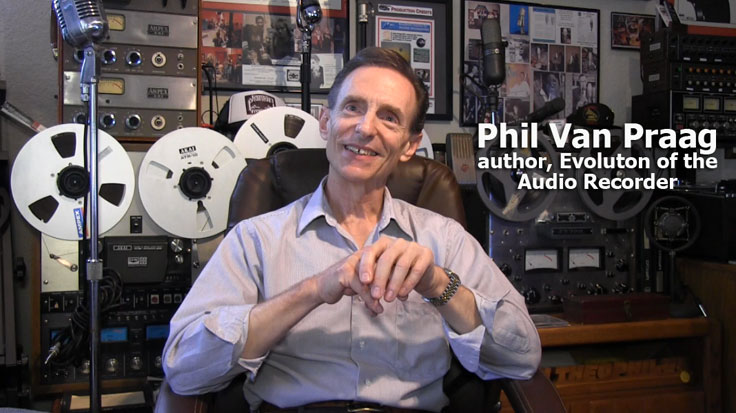 Phil Van Praag - author - Evolution of the Audio Recorder
Phil Van Praag - author - Evolution of the Audio Recorder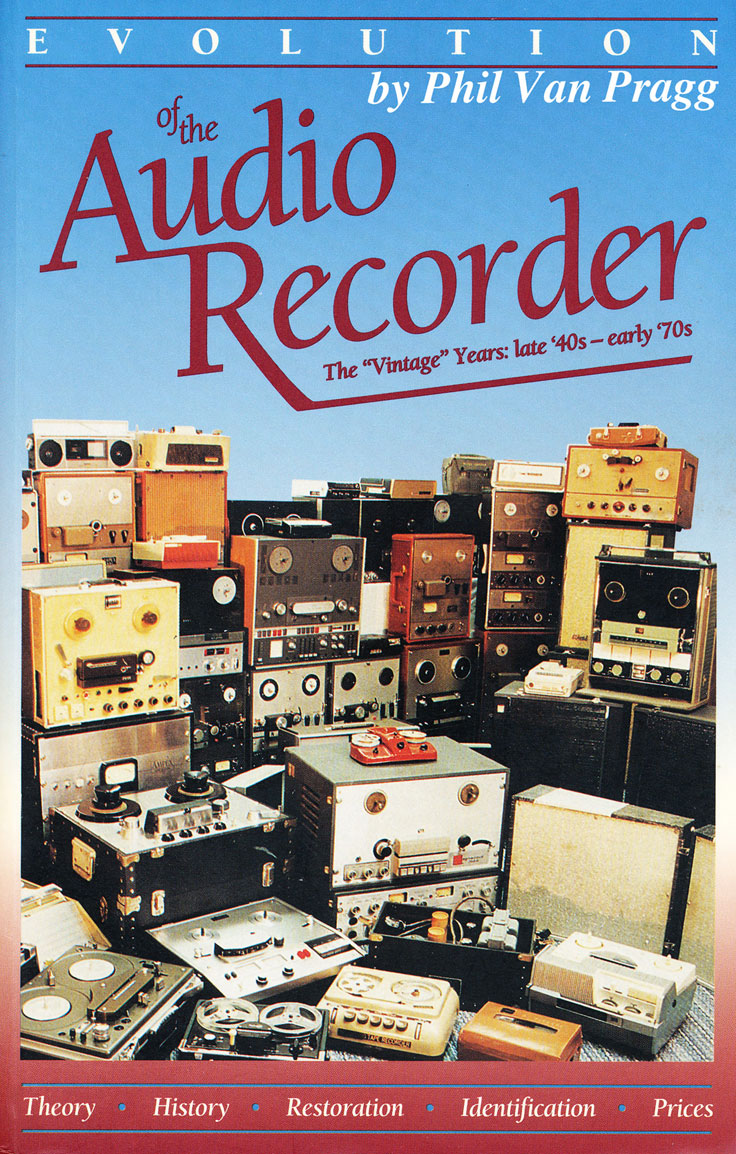
Phil Van Praag is the author of the wonderful documentation of magnetic tape recorders in his book "The Evolution of the Audio Recorder." Having worked for Ampex as a Senior Instructor in Redwood City, California and as the information technology for another company, Phil has extensive knowledge of the development of both audio and video technology. Phil published a book about the beginnings of sound recording and presents an excellent description of recorders that were significant from the late '40's through the '70's. The interview was produced by Chris & Martin Theophilus for the Museum of Magnetic Sound Recording. Go to Phil Van Praag's MOMSR interview
Roberts/Califone/Rheem
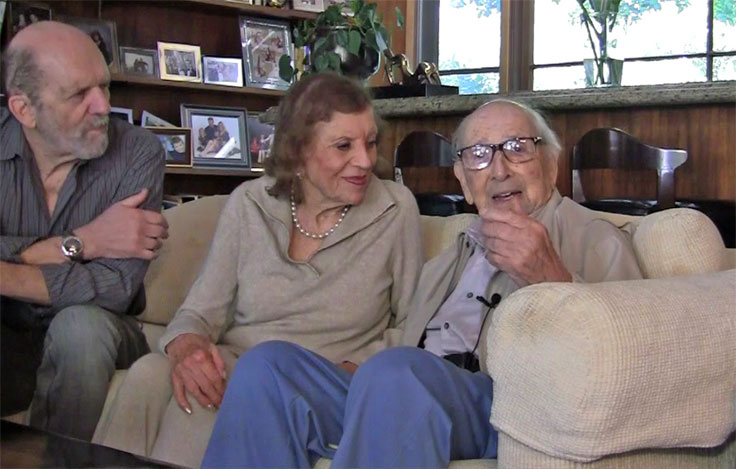
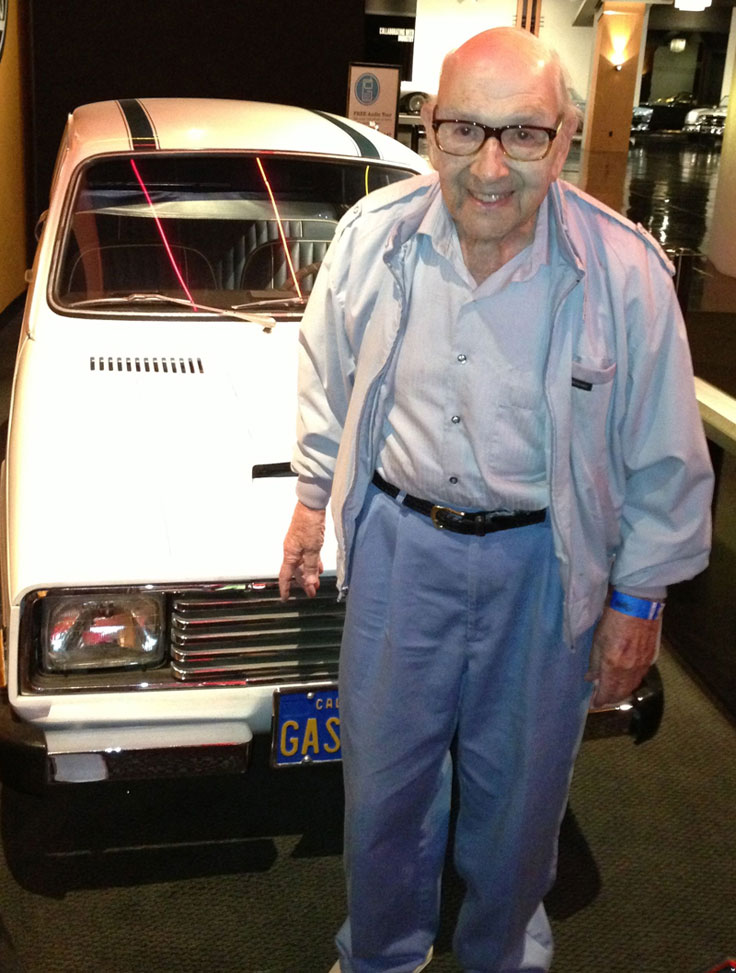
Robert G. Metzner
Founder of Roberts Recorders, Califone A/V December 11, 2012
Go to Roberts/Califone /Rheem stories
Reelsound Recording - Malcolm Harper
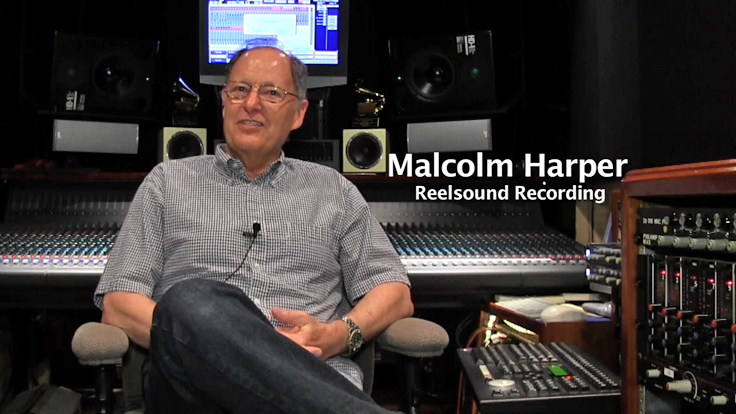
Malcolm Harper owner of Reelsound Recording was interviewed by Chris and Martin Theophilus, Phantom Productions, Inc. for the Museum of Magnetic Sound Recording. In addition to Malcolm's great stories about his company, video inserts from one of his Austin on-location jobs shows some of the work involved in completing on-location sound recording productions. Go to Reelsound Recording Stories to Play video
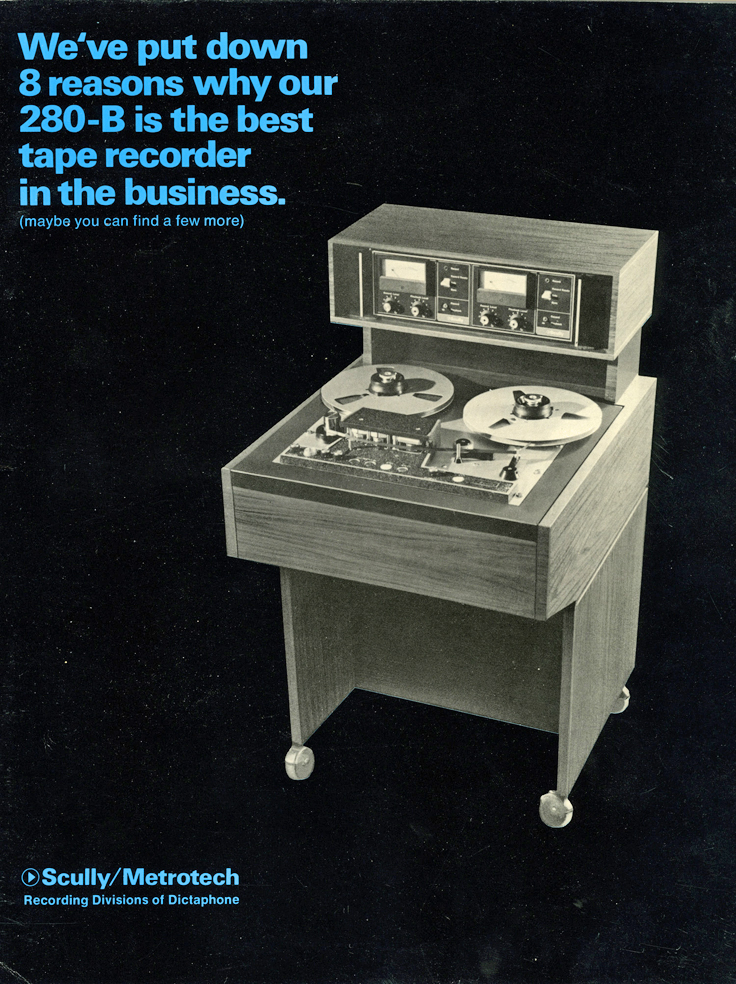
Scully
Scully Stories - Remy Ann David/Crow Mobile
Sony
Go to Sony Stories
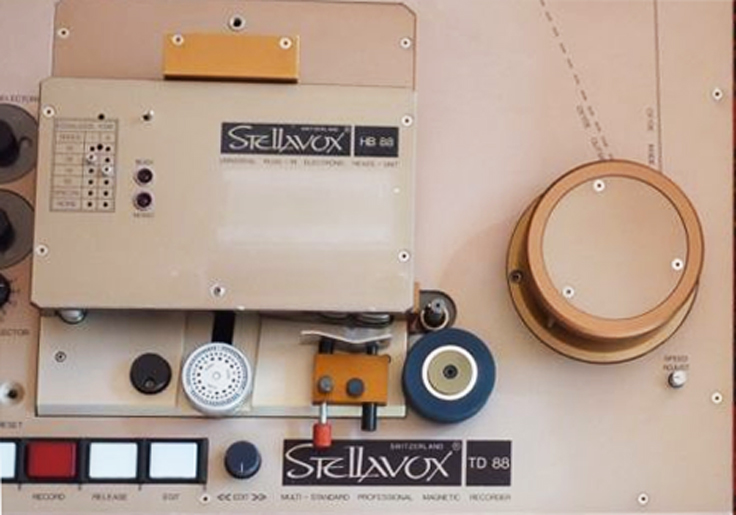
Stellavox
Go to Stellavox Stories
Paul Stubblebine - The Tape Project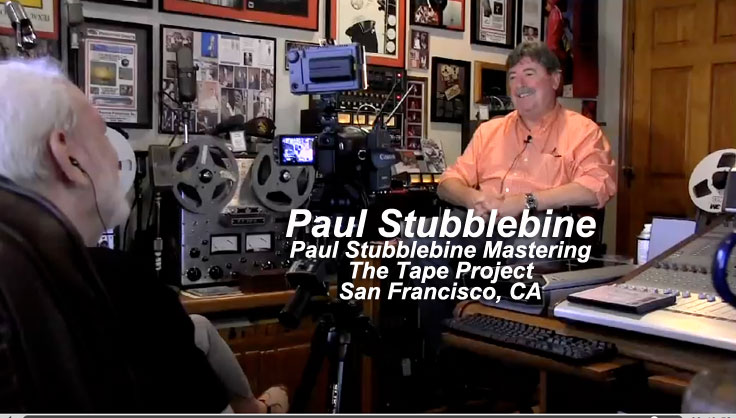
On October 31, 2014 Paul Stubblebine and his wife Connie with a couple of friends toured our vintage reel tape recorder recording collection. Paul sat down for an interview about his history for the Museum of Magnetic Sound Recording. Paul is the owner of Paul Stubblebine Mastering and the founder of "The Tape Project." Go to Paul Stubblebine's MOMSR interview.
Paul began his mastering career in San Francisco in 1973. For eleven years he worked at a recording and mastering facility on Folsom Street which, originally owned by CBS, was later bought by David Rubinson and became known as The Automatt. During the CBS period, in addition to the CBS catalog, the studio also brought in outside work from the Record Plant and Wally Heider's including records by The Grateful Dead, The New Riders of the Purple Sage, Sly Stone, Santana, Joan Baez, Bill Evans, Tony Bennett and Jane Fonda's phenomenally successful workout record engineered by Leslie Ann Jones. This is also where the mastering was done for the US releases of Rough Trade and Factory Records including Joy Division, and New Order. During this period, records mastered at the Automatt were on the charts continuously. Paul then went on to become chief engineer at Rocket Lab, also in San Francisco, where he worked until starting his own company, Paul Stubblebine Mastering, in 1997.
Tandberg
Go to Tandberg Stories
Tapesonic
Go to Tapesonic Stories
Teac Series 50 T-3413 A photos contributed by Dirk van Tamelen
We were not aware of this model Teac reel tape recorder. It's serial number is "01" which indicates it may have been a prototype. It was most likely the beginning of the Series 70 reel tape recorders.
"Had in possession since young electronics tech now over 40 Years now. 1/4" 1/2 track with positive large rubberized factory knobs assuming for mastering (didn't know it or about the XLR rear connections at the time of acquisition as an 18yr old ). All worked great then and still does.
Purchased from a commercial electronics parts wholesale reseller with est 3kft warehouse of overstock of many off shoot electronics parts including a chance Teac/Tascam RTR preamps and etc. Located in Westlake Village, Ca USA circa @1976 On Agoura Road. Store owner was Irv Finkel and his wife who tended the shop. Rather a quirky but loveable married couple running a dingy warehouse of spare random components.. but this unit stood out even back then.
Much thanks ! Dirk from US. "

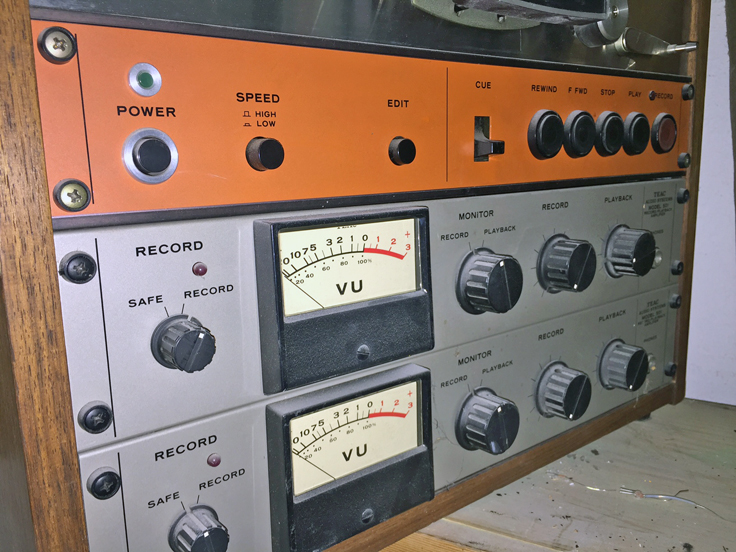


"Ps. After finding and thinking on your website and what brought you to such dedication....
On a personal note of interest regarding magnetic recording, for some unknown reason as a young teenager, our family received a boxed Panasonic reel to reel full sized deck, sent to US from my older Vietnam army brother Chris van Tamelen. It was mesmerizing. As a mechanical and functional audio device. Most every day, after grade school would spend hours spending face time with the unit in the living room. Recording, Stopping. Playing back. Anything. Made so much technical sense.... At the time as playing guitar and piano since a 5 yr old.
Believe it ultimately directed an entire future. Thank you for your reverence to this medium.
Dirk van Tamelen (California)"
TEAC TASCAM
 Dr. Yoshiharu Abe (03/31/1931 01/02/2013)
Dr. Yoshiharu Abe (03/31/1931 01/02/2013)
Yoshiharu Abe is known as the father of personal multi-track recording in the audio engineering field. He was one of the five founders of TEAC in 1957 and went on to become one of the company’s most important product designers. Abe-son designed several landmark products over his long career including the 80-8 and the Portastudio series. He later worked for Fostex and was a key player in the teams that created the B-13 and X-15. Beginning in 1948 he also began writing extensively for audio engineering magazines and authored three text books on audio engineering. NAMM
 Budd Johnson, VP Teac Tascam (02/10/1942 - 12/04/2011)
Budd Johnson, VP Teac Tascam (02/10/1942 - 12/04/2011)
Budd Johnson was a key member of the TEAC team that oversaw the development of the American branch of the company known as TASCAM. As a result Budd was there in the late 1960s through the early 70s to witness first hand, the remarkable and somewhat unexpected success of the home recording market. His product spec sheets and ads later proved to have been a key role in the popularity of TASCAM's reel and mixing units. He also played an early and important part in the success of Fostex and served as that pioneering company's president in the early years. Within all of his fascinating stories he stressed the joy he had going to work each day and doing something he loved. NAMM
Go to Teac/Tascam Stories
Terra Nova Studio - Jerry Tubb and Nick Landis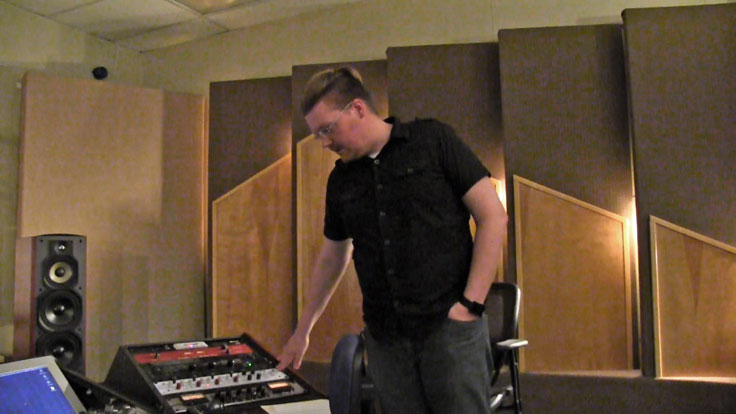
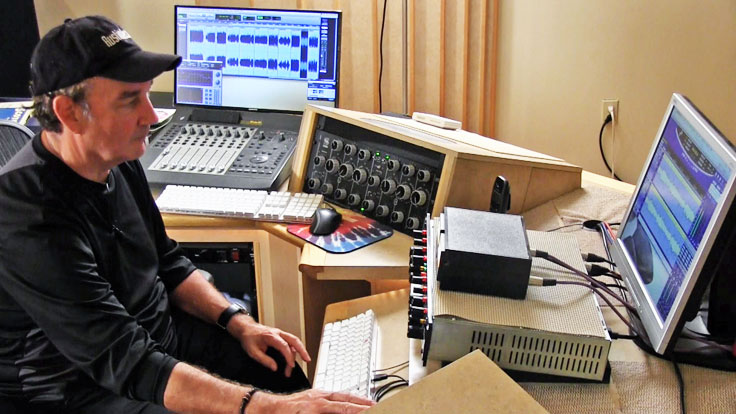 Terra Nova Mastering Studios was founded in 1990 in Austin, Texas by Diane and Jerry Tubb. Jerry and engineer Nick Landis were interviewed in 2015 for the Museum of Magnetic Sound Recording. Go to the interview page.
Terra Nova Mastering Studios was founded in 1990 in Austin, Texas by Diane and Jerry Tubb. Jerry and engineer Nick Landis were interviewed in 2015 for the Museum of Magnetic Sound Recording. Go to the interview page.
Tom Vernon

Tom Vernon recently toured our Museum as part of a story he's writing on vintage equipment. He agreed to sit down for an interview. Go to Tom Vernon's MOMSR interview.
William Hewton - Ampex 600 restoration
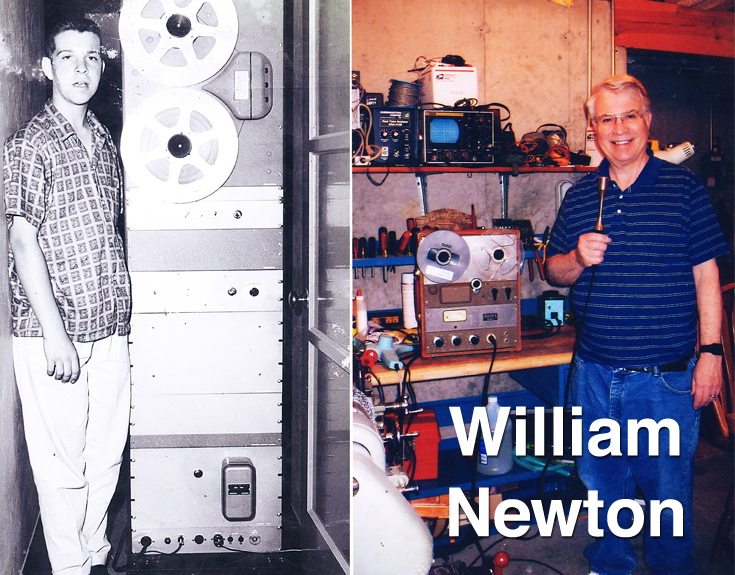
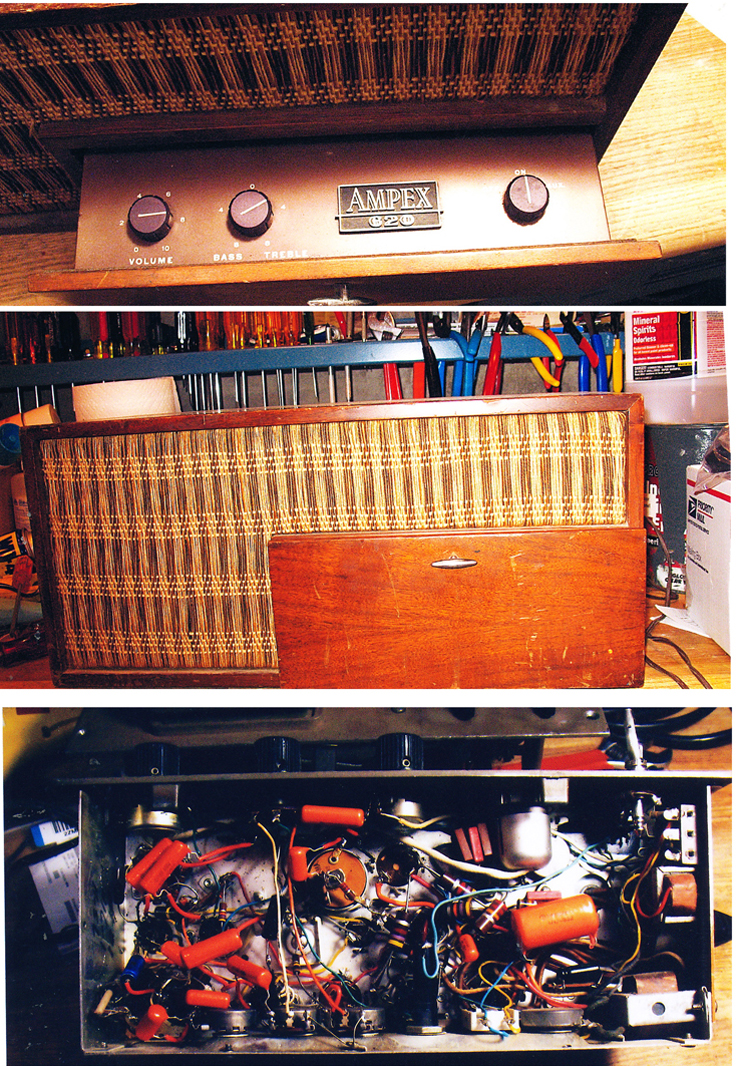

Wollensak 3M
Go to Wollensak Stories
Webcor 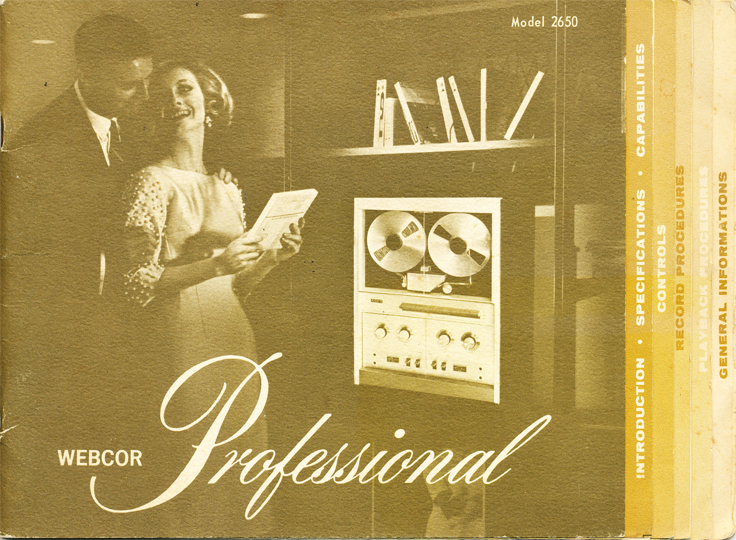
Go to Webcor Stories

